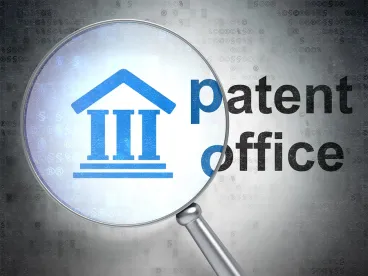2019 Trends and Statistics
The number of IPR petitions filed fell in 2019. PGR petitions fell even more so, albeit from 2018’s all-time high. CBM petitions trickled almost to a complete stop—the lowest number since the passage of the America Invents Act—in anticipation of the 2020 sunset of the CBM pathway. In the last three years, PGRs have almost doubled as a proportion of all petition types, but this may be due to a decrease in IPRs and a more significant decrease in CBMs. Institution rates have also crept steadily downward, perhaps reflecting the SAS decision’s all-or-nothing institution requirement.
SCOTUS on PTAB
This year, the Supreme Court only addressed the PTAB in one case: Return Mail v. U.S. Postal Service, 139 S. Ct. 1853 (June 10, 2019). In Return Mail, the Postal Service sought CBM review of Return Mail’s patent. The Court held, however, that a federal agency is not a “person” able to seek post-issuance administrative review of the validity of a patent under the America Invents Act. In doing so, the Court emphasized that the presumption against treating the government as a “person” in statutory language applies. Although the direct effects of the case may not be felt very broadly, as the federal government files very few petitions, it further highlights a recent trend of the Supreme Court aligning patent law with other substantive doctrines—what some have referred to as addressing not circuit splits but “field splits.”
Constitutional Issues.
Several PTAB-related Federal Circuit decisions implicated constitutional issues, including the Appointments Clause, the Taking Clause, sovereign immunity, and Article III standing.
-
Arthrex v. Smith & Nephew, 941 F.3d 1320 (Oct. 31, 2019), kicked off a series of discussions yet to be fully resolved when the Federal Circuit held that PTAB judges were appointed in violation of the Appointments Clause of the Constitution, severed the application of for-cause employment protection provisions to those judges, and remanded the case for a rehearing before a new panel.
-
The Federal Circuit concluded that retroactive application of IPRs to pre-AIA patents was not a taking in Celgene Corp. v. Peter, 931 F.3d 1342 (July 30, 2019).
-
Further, the Federal Circuit held in University of Minnesota v. LSI Corp., 926 F.3d 1327 (June 14, 2019), that state sovereign immunity does not apply to IPRs, harmonizing the law in this area with tribal sovereign immunity under 2018’s decision in Saint Regis Mohawk Tribe v. Mylan, 896 F.3d 1322 (2018).
-
And finally, the Federal Circuit continued exploring requirements to show competitor standing in appeals from IPRs under Article III—for instance, in General Electric v. United Technologies, 928 F.3d 1349 (July 10, 2019).
Shifting Strategies Post-SAS.
The aftermath of SAS Institute v. Iancu, 138 S. Ct. 1348 (2018), continues to be felt in Federal Circuit decisions that implicate potential strategic considerations at the PTAB. For instance, in BioDelivery Sciences v. Aquestive Therapeutics, 935 F.3d 1362 (Aug. 29, 2019), the Federal Circuit held that because the PTAB has unappealable discretion to institute petitions, it need not institute even on post-SAS remand even if it previously found a reasonable likelihood that the petitioner would prevail. Thus, even for a petition with some strong grounds, if others are weak, the PTAB may deny the entire thing in the interests of administrative efficiency. On the discretionary-denial front, the PTAB also recently designated various related cases as precedential, including NHK Spring Co. v. Intri-Plex, IPR2018-00752 (PTAB Sept. 12, 2018) (in which advanced stage of district court proceedings rendered IPR inefficient), and Valve Corp. v. Electronic Scripting Products, IPR2019-00062 (PTAB Apr. 2, 2019) (in which multiple petitions from similarly situated petitioners weighed against review).
Additionally, the advent of the PTAB’s Motion to Amend (MTA) pilot program prompts additional strategic considerations.
Statutory Issues
Several Federal Circuit decisions affected statutory aspects of the PTAB, including real-party-in-interest considerations, grounds in final written decisions, and the time bar.
-
In AC Technologies v. Amazon.com, 912 F.3d 1358 (Jan. 9, 2019), the Federal Circuit held that the PTAB must address each ground from the petition in its final written decision. There, the case occurred in the context of a post-SAS reconsideration, and certain grounds had been considered on remand but not in institution. But the Board, the Federal Circuit noted, satisfied due process by permitting discovery and additional briefing on these grounds.
-
In Power Integrations v. Semiconductor Components, 926 F.3d 1306 (June 13, 2019), the Federal Circuit held that real-party-in-interest (RPI) relationships arising after filing but before institution should be considered for purposes of the statutory time bar under 35 U.S.C. § 315(b).
-
Further, in Game and Tech. Co. v. Wargaming Group, 942 F.3d 1343 (Nov. 19, 2019), the time bar did not apply where the petitioner was not properly served due to defective service.
-
Indeed, as we have previously discussed, the time-bar has been a frequent topic over the last year at the Federal Circuit and PTAB, with the PTAB having designated several related time bar–related decisions as precedential. Additionally, the Supreme Court is poised to address the time bar in Thryv v. Click-to-Call, discussed below.
PTAB’s Precedential Opinion Panel
The USPTO recently revised its Standard Operating Procedures, including creation of the Precedential Opinion Panel (POP). The POP operates at the discretion of the Director to decide issues of “exceptional importance” to the PTAB, with its members being the Director, the Commissioner, and the chief PTAB judge. The POP is empowered to (1) conduct Precedential Opinion Panel review of recently issued Board decisions, (2) designate issued decisions as “precedential” or “informative,” and (3) de-designate such decisions to “routine.” POP Review is only available by “recommendation” following procedures in the PTAB’s revised SOPs. The Federal Circuit is currently considering whether the POP deserves Chevron deference in Facebook v. Windy City Innovations, No. 2018-1400.
In 2019, the PTAB designated 19 decisions as precedential and 13 as informative. Further, three POP Review decisions were made in 2019:
-
In Proppant Express v. Oren Techs, IPR2018-00914 (Mar. 13, 2019), the PTAB addressed whether a petitioner may be joined to a proceeding in which it is already a party, including joining new issues after the time-bar date. The POP concluded that such joinder was not prohibited and fell within the Board’s discretion.
-
In GoPro, Inc. v. 360Heros, Inc., IPR2018-01754 (Aug. 23, 2019), the PTAB addressed whether service of a pleading asserting a claim alleging infringement, where the serving party lacks standing to sue or the pleading is otherwise deficient, triggers the 1 year time period for a petitioner to file a petition under 35 U.S.C. § 315(b). The POP reversed the PTAB’s prior policy and, aligning with the Federal Circuit’s Click-to-Call holding, held that the time bar is triggered in this situation.
-
In Hulu v. Sound View Innovations, IPR2018-01039 (Dec. 20, 2019), the PTAB addressed what is required for a petitioner to establish that an asserted reference qualifies as a “printed publication” at the institution stage. In doing so, the POP clarified the relevant standard of review, the role of post-institution evidence, the lack of a presumption of a reference being a “printed publication,” and the role of indicia.
Updates to AIA Trial Practice
In July 2019, the USPTO published a second update to the AIA Trial Practice Guide (first update was August 2018), and a consolidated guide in November 2019. Guidance included in the 2019 update included the following:
-
Factors that may be considered by the Board in determining when additional discovery will be granted,
-
The revised claim construction standard to be used in IPR, PGR, and CBM proceedings,
-
The submission of testimonial evidence with a patent owner preliminary response,
-
Information to be provided by the parties if there are multiple petitions filed at or about the same time challenging the same patent,
-
Motion to amend practice,
-
Factors that may be considered by the Board in determining whether to grant a motion for joinder,
-
Procedures to be followed when a case is remanded, and
-
Procedures for parties to request modifications to the default protective order.
Subject-Matter Eligibility
2019 saw numerous questions around whether the Supreme Court would further address subject-matter eligibility issues under § 101. But the Supreme Court’s recent denial of three pending cert petitions implies that the Court may pass on these issues for the time. In contrast, the PTAB has been using its precedent-setting procedures to address subject-matter eligibility at the USPTO. In 2019, it designated six opinions in ex parte appeals for electronic technologies that apply the USPTO’s 2019 revised § 101 guidance. It remains open whether the PTAB will similarly apply the guidance to life-sciences products in 2020.
Cases to Watch in 2020
There are few pending cert petitions currently on PTAB issues. The Supreme Court will address the appealability of time bar decisions in Thryv, Inc. v. Click-to-Call Technologies, LP, which was argued December 9, 2019; specifically, the Court will decide if time-bar determinations affecting institution are unappealable just because 35 U.S.C. § 314(d) states that the decision whether to institute an IPR is unappealable. One PTAB case has also been granted review by the Precedential Opinion Panel: Hunting Titan v. DynaEnergetics, IPR2018-00600, which asks about the Board’s ability to raise grounds of unpatentability on its own.





 />i
/>i
